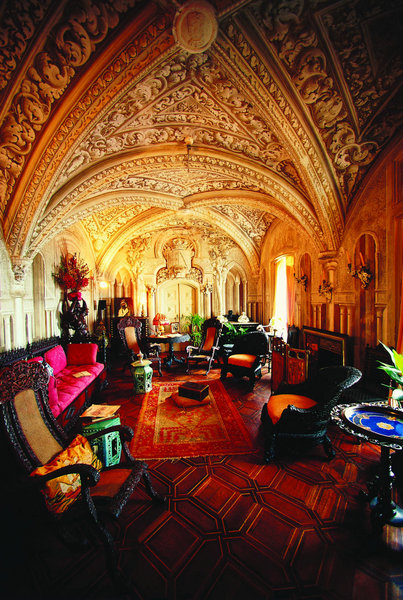Building love in Lisbon
 |
|
The Pena National Palace mixes styles of the neo-gothic, neo-manueline, neo-Moorish and neo-Renaissance architecture and its interior is sophisticatedly decorated.[Photo/Courtesy of Tourism Portugal] |
It was erected to protect against Christian invaders but never was besieged.
Ironically, it was abandoned after Christians conquered the settlement in 1147, having punctured the state security apparatus from elsewhere.
The stronghold was built by boring holes into rock that cleaved when wet wood was inserted and swelled.
King Ferdinand II, who reigned from 1837 to 1853, later built a second layer of walls to protect villagers who moved near the castle for safety.
The nature enthusiast planted 2,000 tree species in the area. In the spirit of romantic thought, these were never manicured but rather left uncultivated and are today wild woodlands of burgeoning biodiversity.
Again, the romantic movement was rooted in nature's spontaneity, childlike curiosity, adventure's adulation, unbridled imagination, and amorousness for its own toe-curling and hair-twirling sake. It seized life with more than an inkling of abandon-an ethos that lives on in the city today among its buildings of yore.
But before the era of love was a time of war.
The castle's tower was where the Moorish chief was stationed. He was essentially the king in a real-life chess game. Capture him and-well, checkmate.
Hence, the "betrayal door".
The fortification-which, as a stone bulwark, resembles small sections of China's Great Wall-had an escape channel for if defeat was imminent.
But the two-way tunnel isn't only a double-edged sword metaphorically. It could put you at the literal edge of a weapon.
A blade caressing a captured absconder's throat could turn a soldier more concerned with flight than fight into a stoolpigeon. They must reveal the shortcut to checkmate or be cut short themselves.
An equally explosive yet less dire reality of the design of the nearby Pena National Palace is that lunch was announced with an actual bang.
















